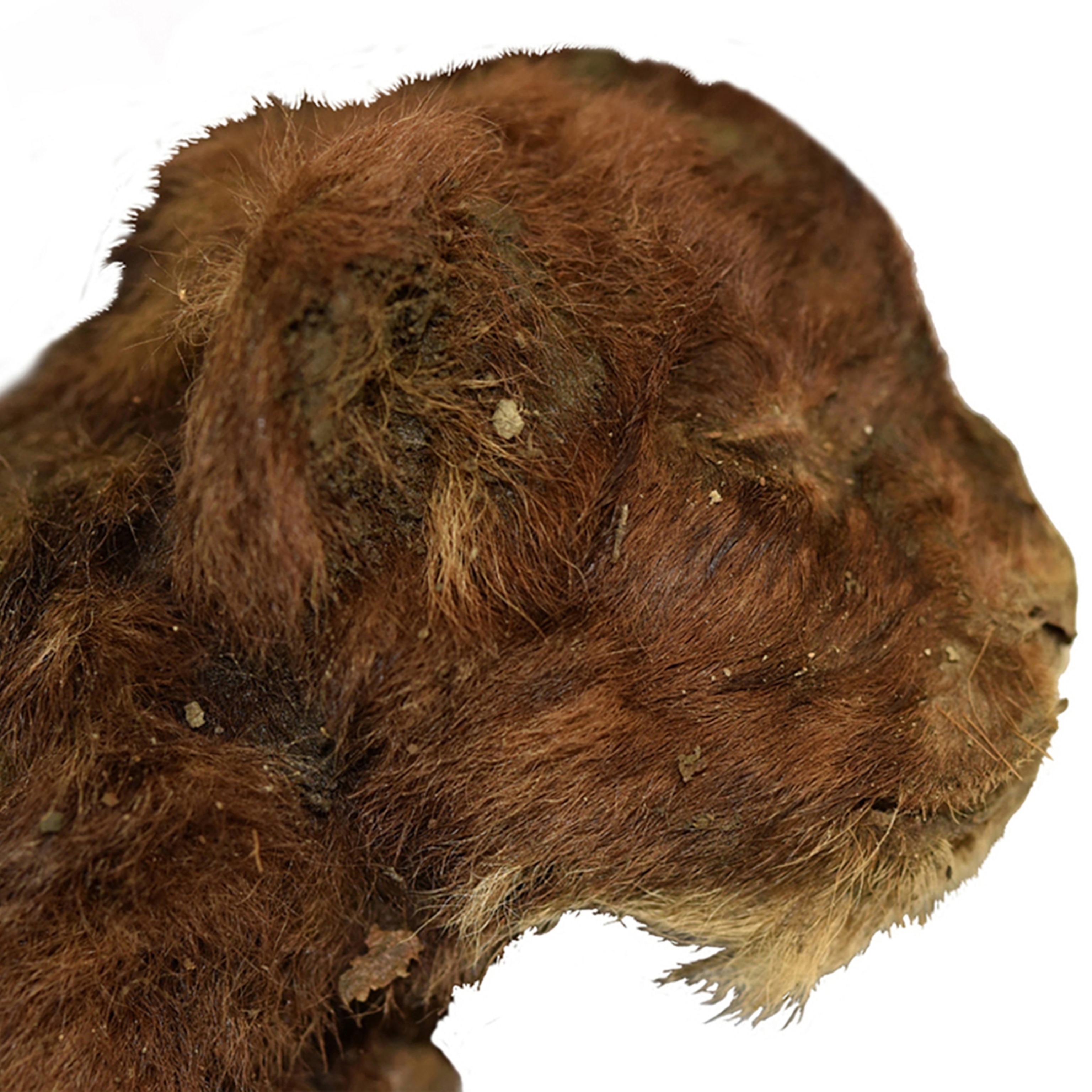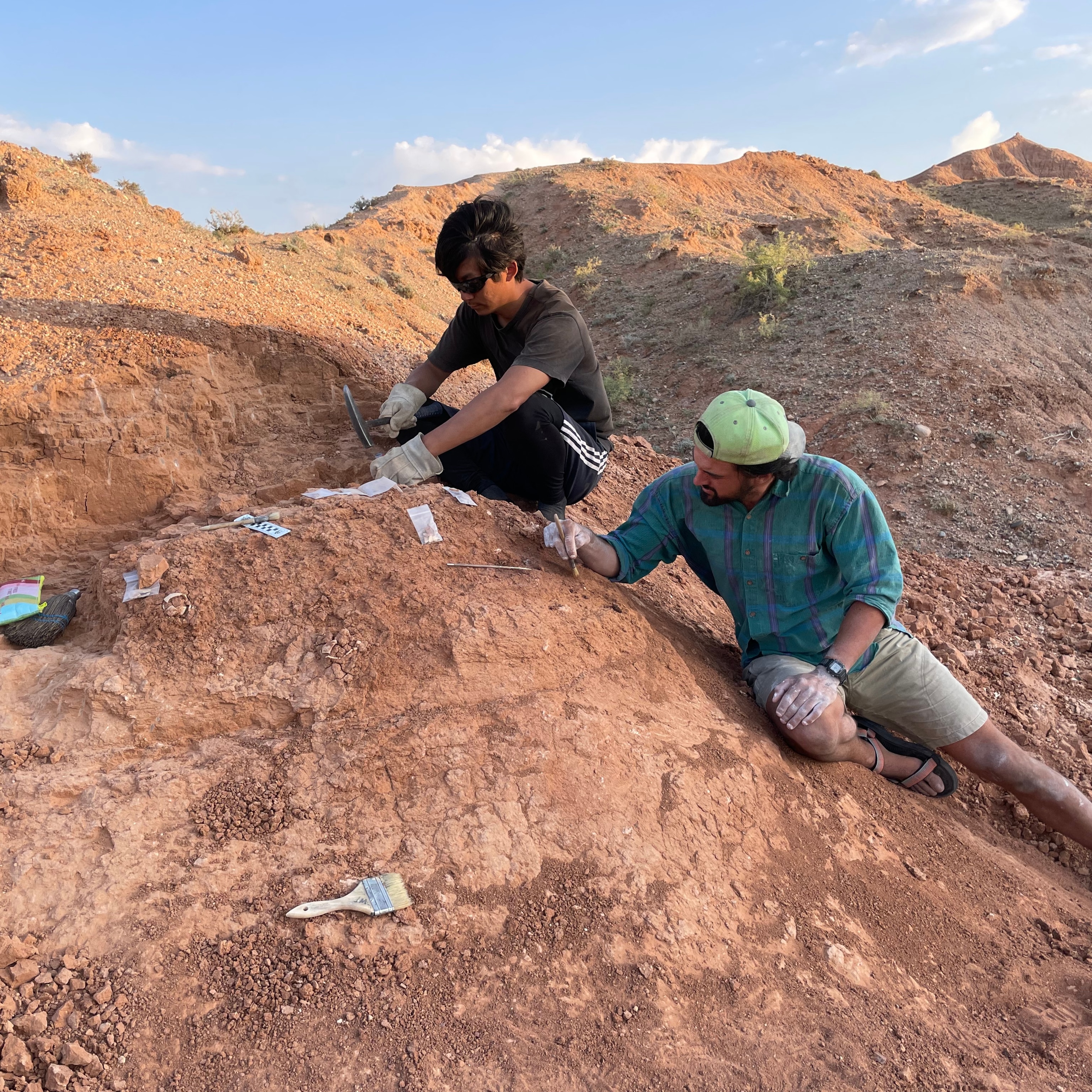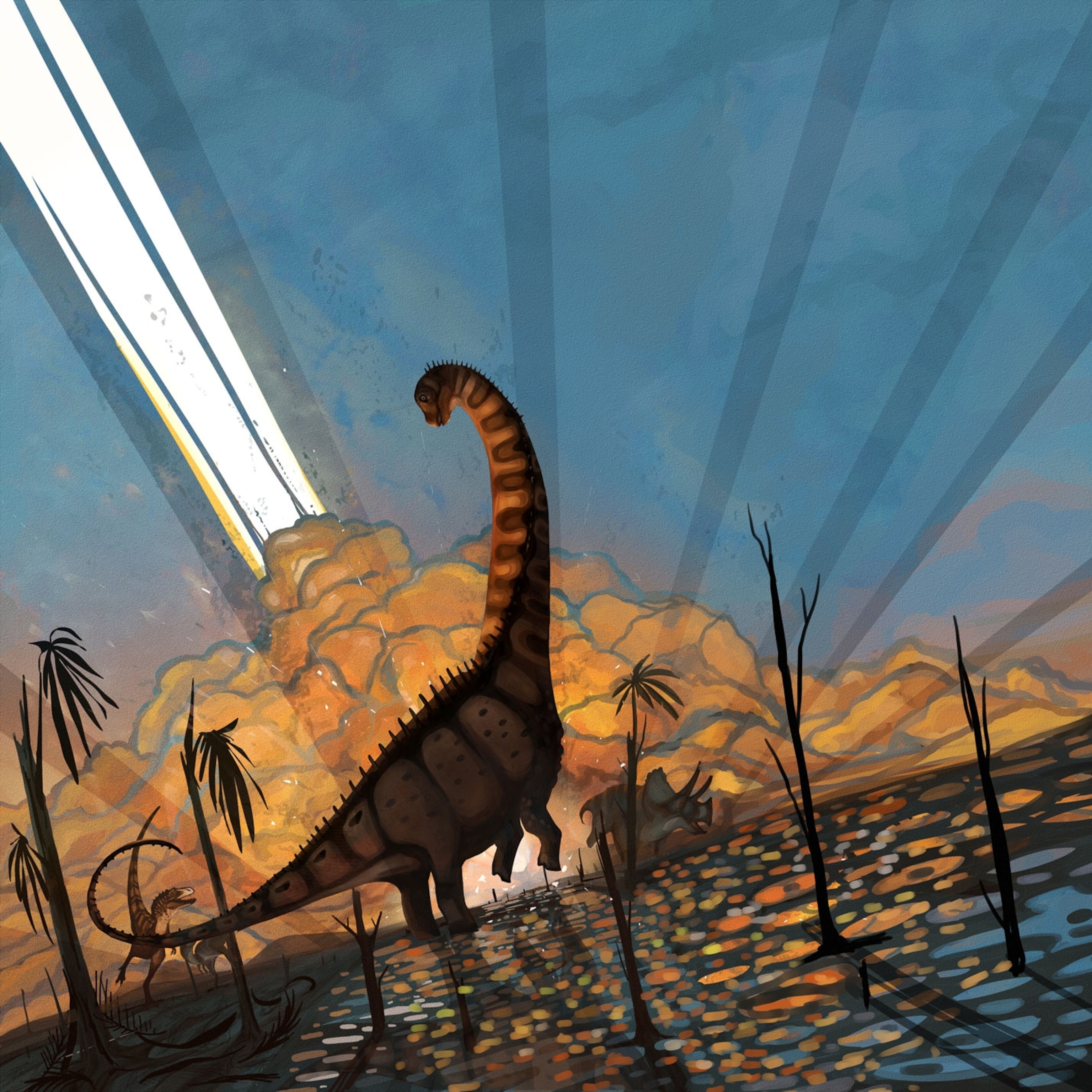No cat is quite like Smilodon. This Ice Age predator, which could exceed the size of the largest living tigers, relied on incredible limb strength to grapple prey to the ground before sinking seven-inch canines into an exposed belly or throat. In museums, pulp novels, and films, Smilodon—meaning “knife-tooth”—is portrayed as the epitome of ferocity, using curved fangs to spill the blood of its prey across the Pleistocene grasslands of North America.
“Their sabers likely allowed prey to bleed out more quickly,” says Vanderbilt University paleontologist Larisa DeSantis, rather than delivering suffocating bites like modern lions. The hunting tactic allowed the predator to tackle large prey, such as American camels and horses, that also roamed the planet during the last glacial period, which ended about 12,000 years ago.
But Smilodon was far from the only saber-toothed beast. The great predator was only the last and largest of an entire family of long-fanged cats that had been thriving for 16 million years. The marsupial relative Thylacosmilus, for example, had long fangs like Smilodon. But in a recent study, scientists found that Thylacosmilus probably wasn’t much of a predator at all. The kangaroo and wombat relative instead may have been more of a scavenger, perhaps using its long canine teeth to cut open carcasses and make the most of abandoned meals.
“Thylacosmilus is not simply a marsupial version of a sabertooth cat,” DeSantis says. “Its ecology may have been very different than anything alive today—a carnivore that specialized on soft organs.”

The find highlights how sabertooths have appeared in a variety of animals across hundreds of millions of years, sometimes surprising scientists with their multifunctionality. Even herbivorous animals developed elongated teeth, using them as displays or weapons against rivals as they munched on foliage.
“Canines can be used for a number of reasons,” says Des Moines University paleontologist Julie Meachen.
Toothsome origins
When it comes to canines, the dental details determine true sabertooths. “The term sabertooth refers to canines that are both long and compressed from side to side,” says Meachen. Sometimes these teeth have serrations to form a better cutting edge, but not always.
Many primates—from lemurs to baboons and chimpanzees—have long canine teeth. By looking at their skulls, one might be tempted to call them saber-toothed. But their canines are cone-shaped, rather than thin and flat like Smilodon’s, meaning they don’t qualify as true sabertooths—the animal’s impressive yawns notwithstanding.
The oldest definitive saber-toothed animal yet found lived about 260 million years ago—and it wasn’t a carnivore. Named in 2011 from fossils found in Brazil, Tiarajudens eccentricus was the stature of a medium dog and looked like a cross between a pig and a turtle. The animal belonged to a clade of vertebrates called synapsids—a big family that includes mammals and all their close relatives. Jutting from the upper jaws of Tiarajudens were a pair of long, flat canines, perhaps the world’s first set of sabertooths.
But the rest of the protomammal’s teeth suggest it ate plants. So why would an herbivore need such impressive fangs? Tiarajudens likely used its teeth for display or perhaps combat among its own species. When a conflict arose, the Tiarajudens with the larger teeth may have won out. And if intimidation didn’t work, the animals might have even slashed at each other to settle disputes.
Evolution’s multitool
Despite the fact that paleontologists have been describing and studying sabertooths since the 19th century, determining how saber-toothed animals employed their fangs has sparked plenty of debate. Even Smilodon itself, which was undoubtedly a carnivore, has been described over the decades as killing its prey in several ways, from using its teeth like a can-opener to dining vampire-style on its victims’ blood.
Thanks to modern analytical techniques that allow paleontologists to simulate the bite of saber-toothed predators, scientists only recently came to the consensus that Smilodon and similar hunters used their teeth to deliver devastating bites to the throat or other soft parts of the body, causing catastrophic damage to subdue their meals quickly. And Smilodon skulls show deep punctures from long fangs, suggesting these apex predators weren’t shy about using their weapons on each other either.
From their ancient origin in the Permian period, sabertooths appear in the fossil record again and again. Vaguely dog-like carnivores called gorgonopsians that lived between 252 and 270 million years ago—some of which weighed as much as an adult polar bear—evolved saber fangs to puncture the hides of their prey.
But different species have used elongated canines in a variety of ways. Herbivores like Tiarajudens and the living musk deer may have used long canines in courtship or for combat.. And while primates do not technically have sabertooths, their long canines are used for self-defense against predators as well as for intimidation and combat between males.
Perhaps strangely, dinosaurs did not evolve any saber-toothed species. Teenage tyrannosaurs sometimes had a fangy look to them, but they never quite resembled the likes of Smilodon.
Mammals are not known to have developed sabers until after the non-avian dinosaurs went extinct 66 million years ago. The 56-million-year-old herbivore Uintatherium, a rhino-sized mammal with six stubby horns on its head, had flattened sabertooths that it probably used for courtship and competition.
Millions of years passed before carnivores evolved sabertooths again. About 40 million years ago, the cat-like nimravids appeared, and the earliest true saber-toothed cats evolved about 16 million years ago. From this point, saber-toothed predators successfully stalked the planet until the extinction of Smilodon just 10,000 years ago.
In the absence of living saber-toothed carnivores, the most impressive canine teeth today belong to herbivores and omnivores. But the long canine's extended history hints that future creatures could also evolve sharp smiles.









